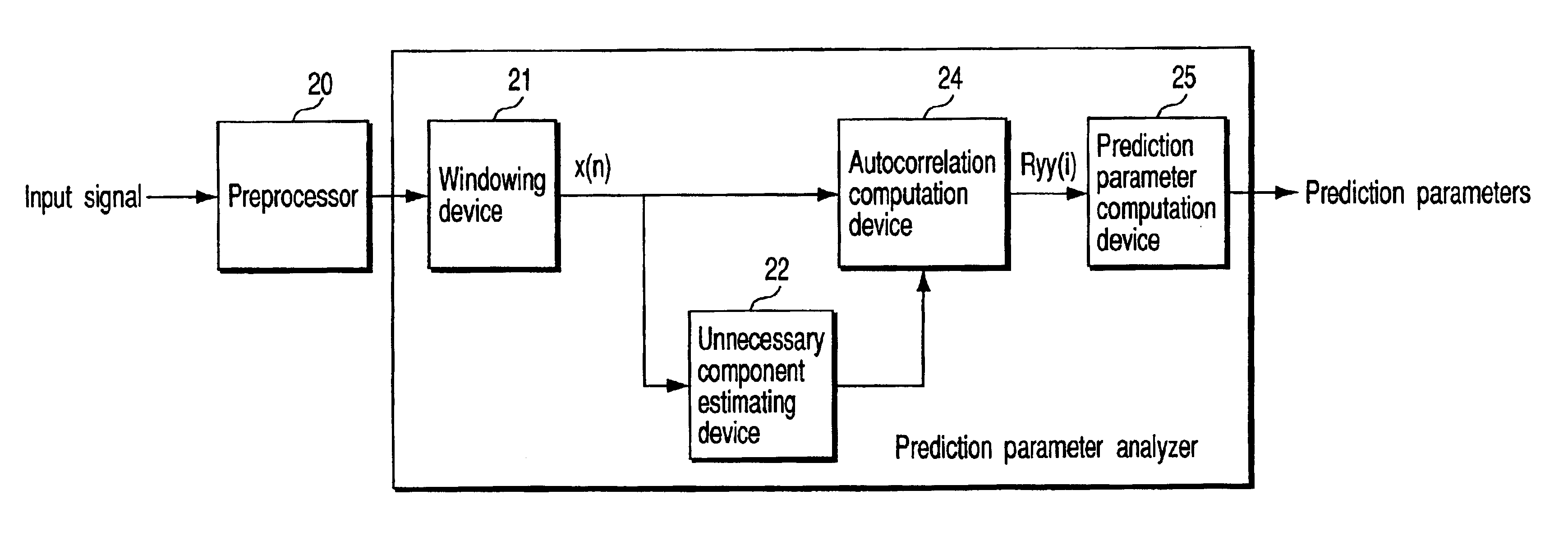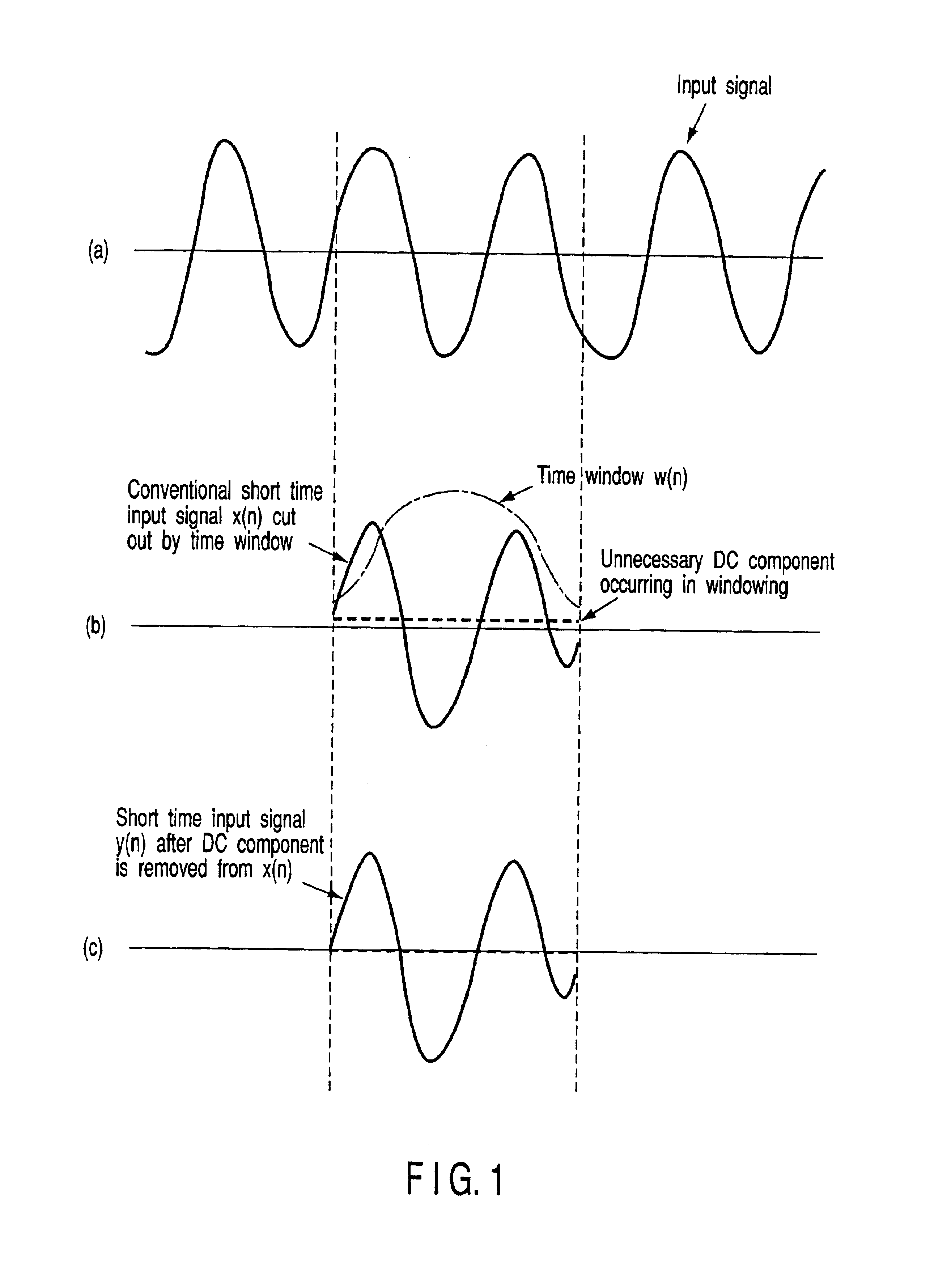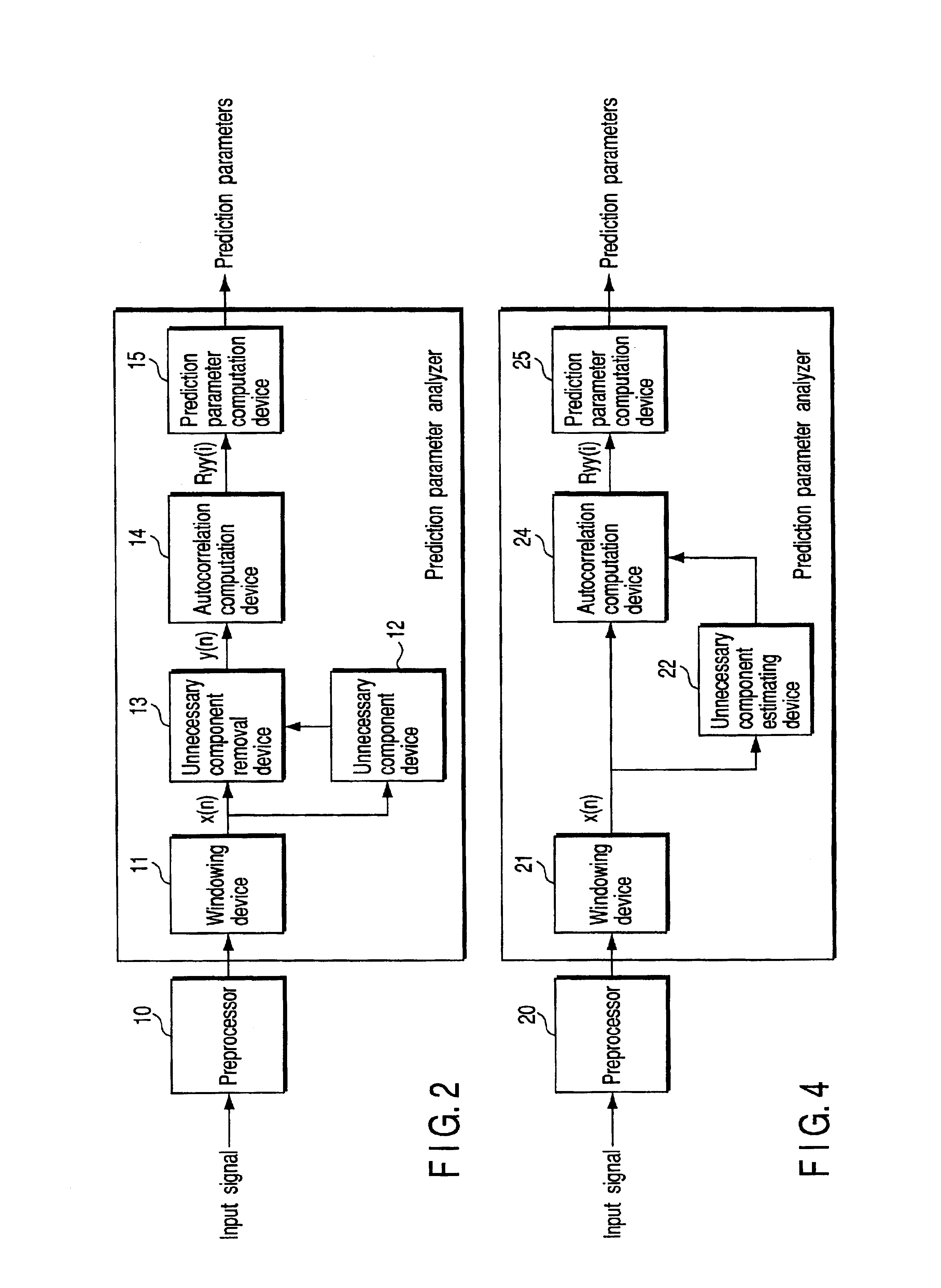Prediction parameter analysis apparatus and a prediction parameter analysis method
a prediction parameter and analysis method technology, applied in the field of prediction parameter analysis apparatus or prediction parameter analysis method, can solve the problems of inaccurate prediction parameters, unfavorable prediction parameters, and difficulty in obtaining prediction parameters stably, and achieve the effect of high analysis efficiency
- Summary
- Abstract
- Description
- Claims
- Application Information
AI Technical Summary
Benefits of technology
Problems solved by technology
Method used
Image
Examples
first embodiment
FIG. 1 shows a waveform for explaining a principle of prediction parameter analysis based on the present invention.
A waveform (a) represents a waveform of an input signal input to a prediction parameter analysis apparatus. The input signal is a signal that the unnecessary low frequency component affecting a prediction parameter analysis is removed from an actual input signal in preprocessing. The preprocessing is realized using a high pass filter with a cutoff frequency of around 50-100 Hz typically. The input signal (shown by (a) in FIG. 1) from which the unnecessary component is removed is cut out by windowing in units of a given length (10 msec to 20 msec). In other words, the input signal is windowed by a time window w (n), to be cut out as a short time input signal x(n) (shown by (b) in FIG. 1). In this case, the input signal is windowed so that harmful effect affecting the frames on both ends of the extracted frame is decreased. As one example, a Humming window or a hybrid win...
second embodiment
(The Second Embodiment)
In the first embodiment, the DC component is directly removed from the short time input signal. In the second embodiment, the affection due to the DC component is excluded in a level of the autocorrelation. FIG. 4 shows a prediction parameter analysis apparatus related to the second embodiment. According to this, the preprocessor 20 preprocesses the input signal similarly to the first embodiment, and input the preprocessed input signal to a widowing device 21. The windowing device 21 cuts out a short time input signal by subjecting the preprocessed signal to windowing. The unnecessary component estimation device 22 analyzes an unnecessary component included in the short time input signal x(n), to generate an estimation signal, and outputs it to an autocorrelation computation device 24. The short time input signal x(n) is sent to the autocorrelation calculation device 24, too. For example, in the short time input signal input to the autocorrelation computation ...
third embodiment
(The Third Embodiment)
FIG. 6 shows a prediction parameter analysis apparatus of the third embodiment. According to the third embodiment, a prediction parameter analysis device comprises a short time input signal generator 41 which generates a short time input signal from an input signal or a signal deriving from the input signal, a component removal device 43 which remove DC components or predetermined frequency band components from the short time input signal, an autocorrelation computation device 44 which computes autocorrelation coefficients based on a modified short time input signal provided from the component removal device 43, and a prediction parameter computation device 45 which computes prediction parameters based on the autocorrelation coefficients.
FIG. 7 shows a flowchart for explaining a prediction parameter analysis method of the third embodiment of the present invention. At first, an input signal is input to the short time input signal generator 41 of the prediction p...
PUM
 Login to View More
Login to View More Abstract
Description
Claims
Application Information
 Login to View More
Login to View More - R&D
- Intellectual Property
- Life Sciences
- Materials
- Tech Scout
- Unparalleled Data Quality
- Higher Quality Content
- 60% Fewer Hallucinations
Browse by: Latest US Patents, China's latest patents, Technical Efficacy Thesaurus, Application Domain, Technology Topic, Popular Technical Reports.
© 2025 PatSnap. All rights reserved.Legal|Privacy policy|Modern Slavery Act Transparency Statement|Sitemap|About US| Contact US: help@patsnap.com



